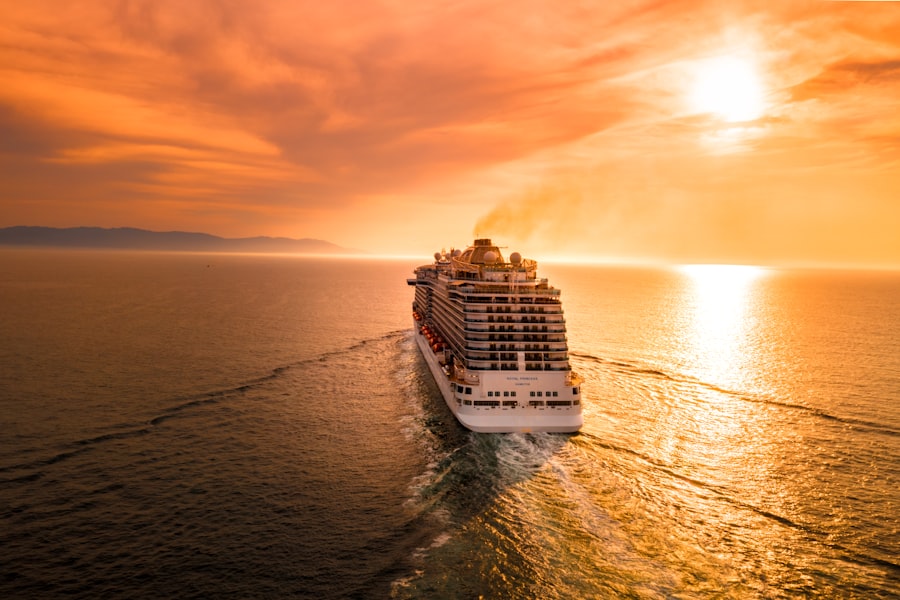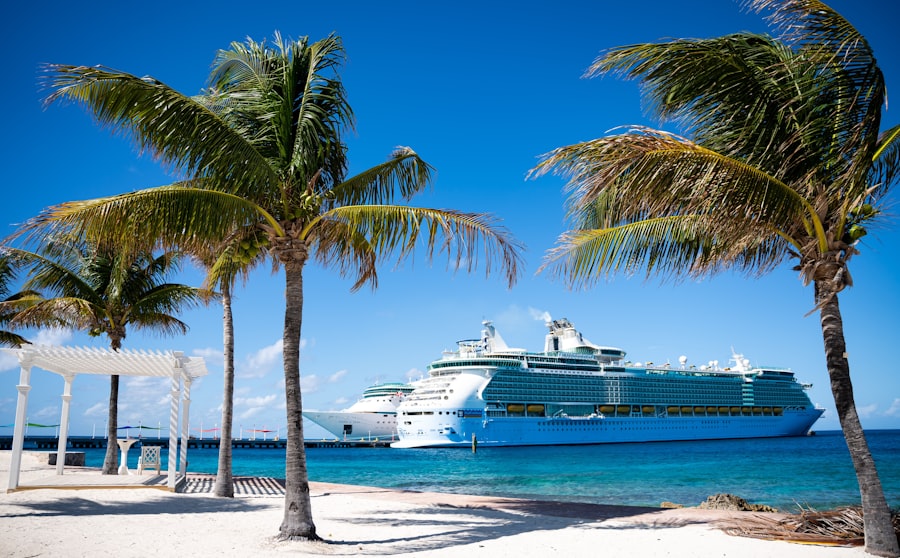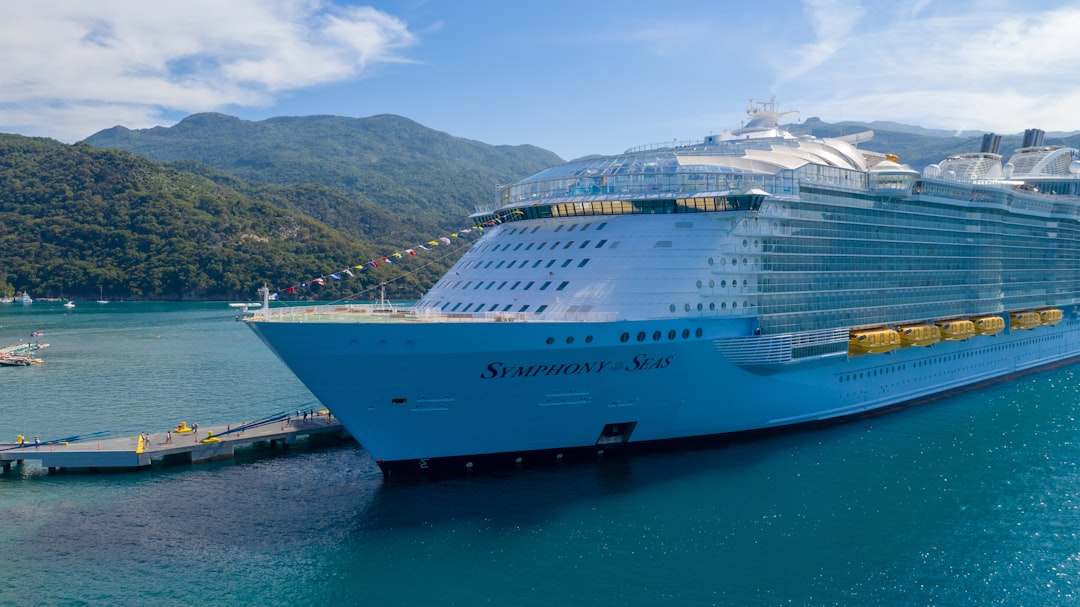The Drake Passage, a body of water that separates South America from Antarctica, is renowned for its tumultuous seas and breathtaking vistas. Stretching approximately 600 kilometers, this passage is often regarded as one of the most challenging maritime routes in the world. Named after the English explorer Sir Francis Drake, who navigated these waters in the late 16th century, the Drake Passage has become a rite of passage for adventurers and nature enthusiasts alike.
The significance of the Drake Passage extends beyond its geographical boundaries. It serves as a critical ecological zone where cold Antarctic waters meet the warmer currents of the Atlantic Ocean.
This unique confluence creates a rich habitat for various marine species, including whales, seals, and seabirds. For many travelers, crossing the Drake Passage is not merely a means to reach Antarctica; it is an integral part of the journey that offers a glimpse into the raw power of nature and the beauty of the Southern Ocean.
Key Takeaways
- The Drake Passage is a treacherous body of water between South America’s Cape Horn and the South Shetland Islands of Antarctica.
- Proper planning and preparation are essential for a journey through the Drake Passage, including packing appropriate clothing and gear for the unpredictable weather conditions.
- Departure from Ushuaia marks the beginning of the adventure, as travelers set sail for the Antarctic Peninsula, bracing for the challenges of the Drake Passage.
- Wildlife encounters in the Drake Passage are abundant, with opportunities to spot various species of seabirds, whales, and other marine life.
- Navigating the infamous “Drake Shake” requires careful attention to weather and sea conditions, as the passage is known for its rough waters and unpredictable weather patterns.
Planning and Preparation for the Journey
Planning a journey across the Drake Passage requires careful consideration and preparation. Travelers must first decide on the best time to embark on this adventure, with the peak season typically occurring during the Antarctic summer months from November to March. During this period, temperatures are milder, and wildlife activity is at its peak, making it an ideal time for exploration.
However, potential travelers should also be aware of the unpredictable weather conditions that can arise at any time, necessitating a flexible itinerary. In addition to timing, travelers must also consider their physical readiness for the journey. The crossing can be physically demanding, and participants are encouraged to engage in pre-trip fitness activities to ensure they are prepared for the challenges ahead.
Packing appropriately is equally important; layers of clothing, waterproof gear, and sturdy footwear are essential for navigating both the ship and the icy landscapes of Antarctica. Furthermore, travelers should familiarize themselves with safety protocols and guidelines provided by their expedition company to ensure a safe and enjoyable experience.
Setting Sail: Departure from Ushuaia

The journey begins in Ushuaia, Argentina, often referred to as the southernmost city in the world. As travelers gather at the port, excitement fills the air, mingling with the salty breeze that sweeps in from the Beagle Channel. The sight of expedition vessels docked against a backdrop of snow-capped mountains sets the stage for an unforgettable adventure.
Passengers embark on their ships, greeted by friendly crew members who provide an overview of what lies ahead. As the vessel departs from Ushuaia, passengers are treated to stunning views of the surrounding landscape. The rugged mountains and lush forests give way to open waters as they leave civilization behind.
The anticipation builds as they enter the Drake Passage, where they will soon encounter both its beauty and its challenges. The ship’s engines roar to life, and with each passing wave, travelers feel a sense of exhilaration as they embark on this remarkable journey toward one of the most remote places on Earth.
Wildlife Encounters in the Drake Passage
| Year | Number of Wildlife Encounters | Most Common Wildlife Species |
|---|---|---|
| 2018 | 120 | Humpback Whales |
| 2019 | 150 | Antarctic Penguins |
| 2020 | 130 | Albatrosses |
One of the most thrilling aspects of crossing the Drake Passage is the opportunity to encounter diverse wildlife that inhabits these waters. As travelers gaze out from the deck, they may spot majestic albatrosses gliding effortlessly above the waves or playful dolphins leaping alongside the ship. The passage serves as a migratory route for numerous species, making it a prime location for wildlife enthusiasts eager to witness nature in its raw form.
The presence of whales is particularly captivating during this journey. Humpback whales, orcas, and even minke whales can often be seen breaching or spouting in the distance. These encounters create unforgettable moments that resonate with travelers long after their journey has ended.
Weather and Sea Conditions: Navigating the Infamous “Drake Shake”
The Drake Passage is infamous for its unpredictable weather and rough sea conditions, often referred to as the “Drake Shake.” This phenomenon can transform a calm sea into a tumultuous expanse within moments, challenging even seasoned sailors. As travelers navigate this stretch of water, they may experience everything from gentle swells to intense storms, making it essential for them to remain adaptable and prepared for any situation. Understanding how to cope with these conditions is crucial for ensuring a safe journey.
Expedition leaders often provide guidance on how to manage seasickness and stay comfortable during rough patches. Passengers are encouraged to stay hydrated and eat light meals while keeping an eye on their surroundings. Despite the challenges posed by the Drake Shake, many find that overcoming these obstacles only enhances their sense of accomplishment and connection to this wild environment.
Onboard Activities and Entertainment

While crossing the Drake Passage can be an exhilarating experience filled with wildlife sightings and unpredictable weather, there are also plenty of onboard activities designed to keep passengers engaged during their journey. Expedition ships are equipped with various amenities that cater to travelers’ interests and preferences. From cozy lounges where guests can relax with a book to observation decks offering panoramic views of the ocean, there is no shortage of ways to enjoy time at sea.
In addition to relaxation options, many ships offer organized activities such as photography workshops, yoga classes, or even cooking demonstrations featuring local cuisine. These activities provide opportunities for passengers to connect with one another while learning new skills or simply enjoying shared experiences. Evening entertainment may include movie screenings or guest speakers sharing their expertise on topics related to Antarctica’s ecology and history, ensuring that every moment spent onboard is enriching.
Expert-led Lectures and Workshops
A hallmark of expeditions across the Drake Passage is the inclusion of expert-led lectures and workshops that enhance travelers’ understanding of this unique environment. Renowned scientists, naturalists, and historians often accompany these journeys, sharing their knowledge about Antarctic ecosystems, wildlife behavior, and climate change impacts on this fragile region. These presentations provide valuable insights that deepen passengers’ appreciation for what they are witnessing firsthand.
Workshops may cover a range of topics, from photography techniques for capturing stunning landscapes to discussions about conservation efforts aimed at protecting Antarctica’s delicate ecosystems. Engaging with experts allows travelers to ask questions and participate in discussions that foster a greater understanding of their surroundings. This educational component transforms a simple voyage into an immersive learning experience that resonates long after they return home.
Crossing the Antarctic Convergence Zone
As travelers continue their journey through the Drake Passage, they will eventually encounter the Antarctic Convergence Zone—a significant ecological boundary where cold polar waters meet warmer ocean currents. This zone plays a crucial role in regulating marine life and influences weather patterns in the region. Crossing this invisible line marks a transition into a world where unique ecosystems thrive.
The change in water temperature often leads to an increase in wildlife sightings as nutrient-rich waters attract various species. Passengers may witness an abundance of seabirds diving for fish or seals basking on ice floes as they navigate through this biologically rich area. The experience of crossing into this zone serves as a reminder of nature’s interconnectedness and highlights the importance of preserving these delicate ecosystems for future generations.
Arrival in the Antarctic Peninsula
After days spent navigating through the Drake Passage, travelers finally arrive at their destination: the breathtaking Antarctic Peninsula. This region is characterized by towering glaciers, dramatic ice formations, and stunning landscapes that seem almost otherworldly. As passengers disembark from their vessel onto solid ground for the first time in days, they are greeted by an overwhelming sense of awe at the sheer beauty surrounding them.
The Antarctic Peninsula serves as a gateway to numerous exploration opportunities. Travelers can embark on guided excursions to visit research stations or hike along pristine trails that offer panoramic views of icebergs floating in turquoise waters. Each moment spent in this remote paradise reinforces a deep appreciation for nature’s wonders and highlights humanity’s responsibility to protect such fragile environments.
Exploring the Antarctic Landscape and Wildlife
Exploration in Antarctica is nothing short of extraordinary. The landscape is dotted with massive icebergs that have calved from glaciers, creating surreal formations that captivate visitors’ imaginations. Kayaking through icy waters or embarking on zodiac excursions allows travelers to get up close to these natural wonders while observing wildlife in its natural habitat.
Wildlife encounters abound during these explorations; penguin colonies bustling with activity provide endless entertainment as they waddle about or dive into frigid waters for food. Seals lounging on ice floes offer another glimpse into life in this harsh environment. Each encounter serves as a reminder of nature’s resilience and adaptability in one of Earth’s most extreme climates.
Return Journey: Reflecting on the Drake Passage Experience
As travelers begin their return journey across the Drake Passage, they often find themselves reflecting on their experiences—both challenging and rewarding—during this remarkable adventure. The memories created while navigating turbulent waters or witnessing breathtaking wildlife encounters become cherished stories shared among fellow adventurers. The return trip also provides an opportunity for introspection; many find themselves contemplating their connection to nature and their role in preserving such pristine environments for future generations.
The lessons learned during this journey extend beyond mere travel experiences; they inspire a deeper commitment to environmental stewardship and awareness about climate change impacts on our planet. In conclusion, crossing the Drake Passage is more than just a means to reach Antarctica; it is an adventure filled with challenges, discoveries, and profound connections to nature. From planning and preparation through wildlife encounters and onboard activities, each aspect contributes to an unforgettable experience that resonates long after travelers return home.
The journey serves as both a testament to human curiosity and an invitation to explore one of Earth’s last frontiers while fostering respect for its fragile ecosystems.
Navigating the treacherous waters of the Drake Passage is a formidable challenge for any cruise ship, as this stretch of ocean between the southern tip of South America and Antarctica is notorious for its unpredictable weather and rough seas. For those interested in learning more about the experiences and challenges faced by cruise ships in this region, a related article can be found on MyGeoQuest. This article delves into the unique aspects of cruising through the Drake Passage, offering insights into the preparation and navigation strategies employed by these vessels. To read more, visit the article on MyGeoQuest.
WATCH NOW! Drake Passage: Earth’s Deadliest Waters Revealed
FAQs
What is the Drake Passage?
The Drake Passage is the body of water between the southern tip of South America and the northern tip of the Antarctic Peninsula. It is known for its rough seas and challenging sailing conditions.
What is a cruise ship on the Drake Passage?
A cruise ship on the Drake Passage refers to a cruise that includes sailing through this notoriously rough stretch of water. Many cruises to Antarctica or the Southern Ocean will pass through the Drake Passage.
What should I expect on a cruise ship on the Drake Passage?
Passengers can expect rough seas and potentially stormy weather while sailing through the Drake Passage. Cruise ships typically have stabilizers to minimize the impact of the rough seas, but it’s still advisable to be prepared for motion sickness.
Are there any safety concerns on a cruise ship on the Drake Passage?
Cruise ships that navigate the Drake Passage are well-equipped to handle the challenging conditions. However, passengers should always follow safety instructions provided by the crew and be aware of the potential for rough seas.
What are the benefits of taking a cruise ship on the Drake Passage?
Sailing through the Drake Passage offers passengers the opportunity to experience one of the most remote and pristine regions on Earth. It also provides a chance to see a variety of wildlife, including whales, seals, and seabirds.
